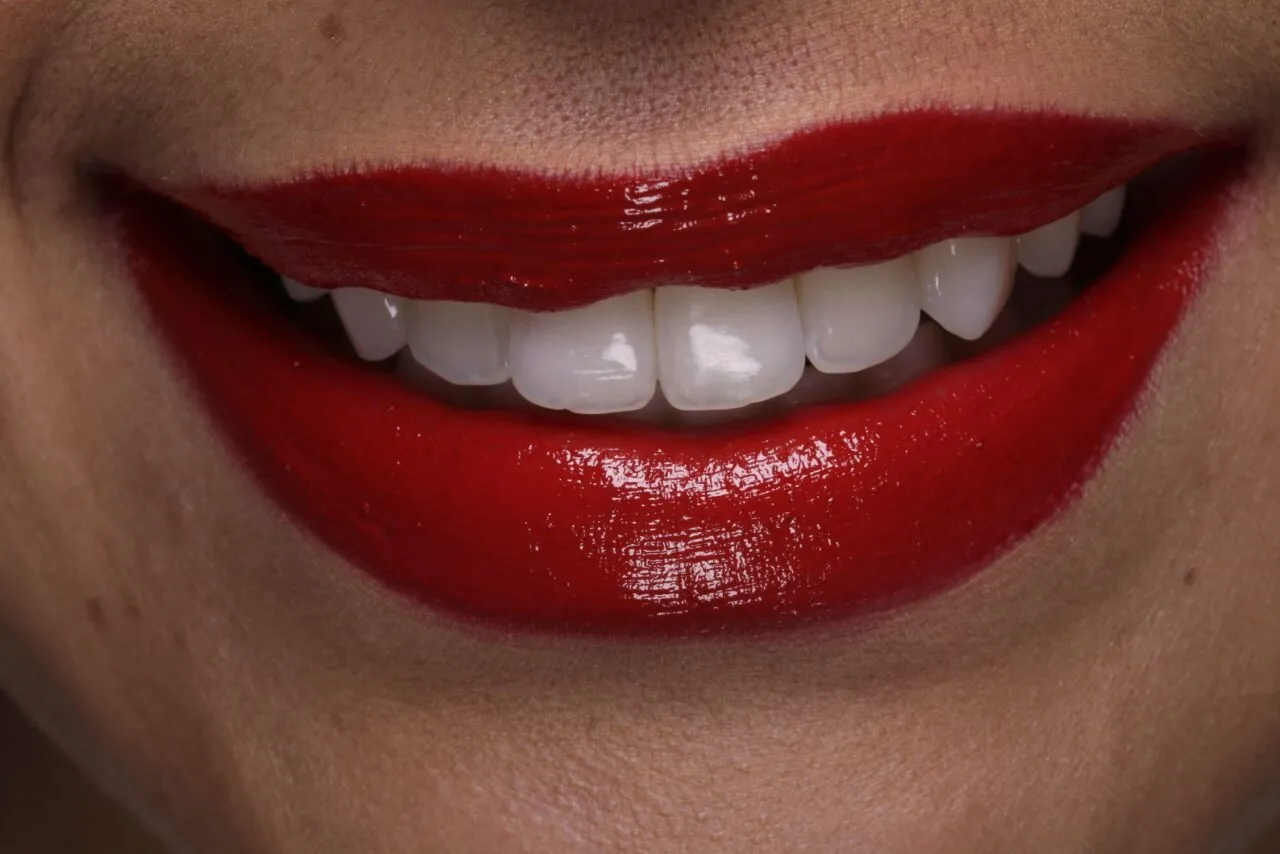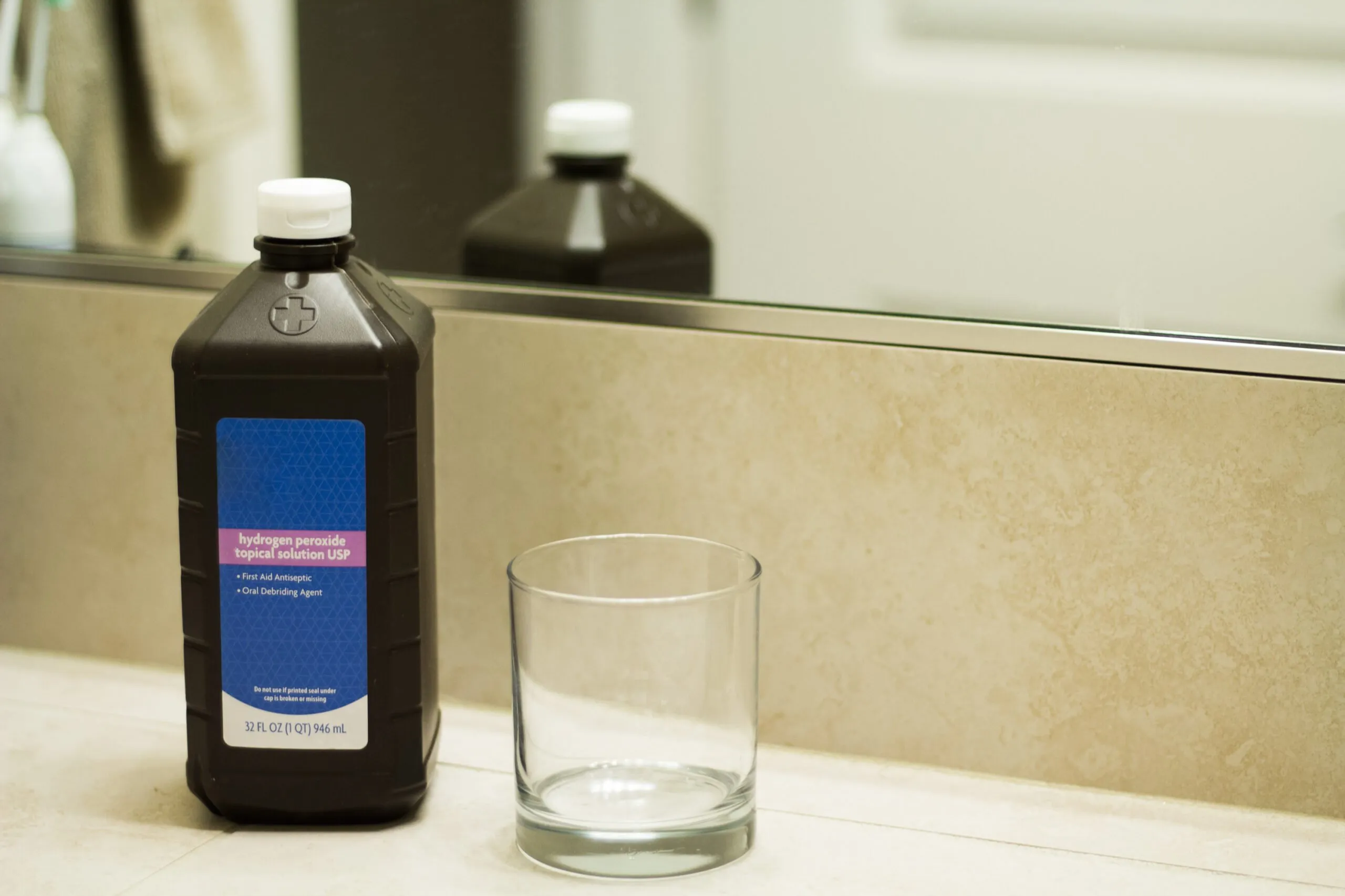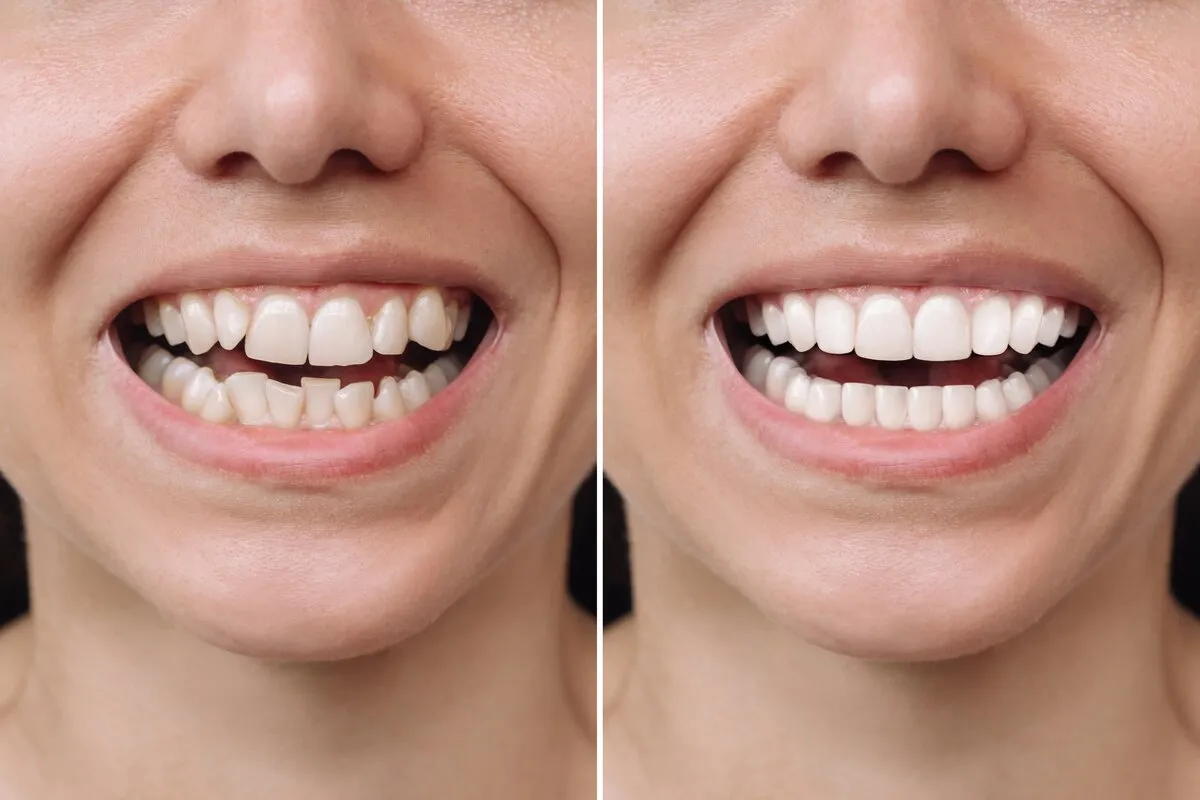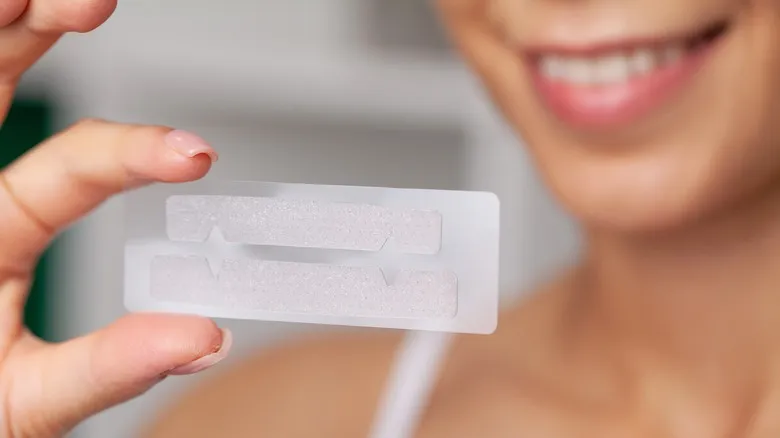Understanding Teeth Whitening with Hydrogen Peroxide
Achieving a brighter smile at home is a goal for many, and hydrogen peroxide has emerged as a popular, accessible solution. This guide delves into the specifics of using hydrogen peroxide for teeth whitening, providing a comprehensive understanding of the process. We’ll explore the science behind it, the steps involved, potential benefits, and crucial safety considerations. Hydrogen peroxide, a common household item, offers a cost-effective alternative to professional treatments. However, understanding its properties and usage is vital for ensuring both effectiveness and safety. This article will guide you through the essentials, helping you decide if this method is suitable for your needs.
The Science Behind Hydrogen Peroxide
Hydrogen peroxide, a chemical compound with the formula H2O2, is a mild antiseptic and oxidizing agent. Its teeth-whitening properties stem from its ability to break down into water and oxygen. This oxidation process is what lifts stains from the enamel of your teeth. The oxygen molecules penetrate the enamel, reacting with the stain molecules and breaking them apart. This process effectively lightens the color of your teeth. The concentration of hydrogen peroxide significantly impacts its effectiveness. Higher concentrations generally lead to quicker results, but also increase the risk of side effects. Understanding the chemical reaction is key to appreciating how hydrogen peroxide works as a teeth whitening agent.
How Hydrogen Peroxide Whitens Teeth

Hydrogen peroxide whitens teeth through oxidation, a chemical reaction. When hydrogen peroxide comes into contact with the stained tooth surface, it releases oxygen. These oxygen molecules interact with the stain molecules embedded in the enamel. This interaction breaks down the stain molecules, effectively lightening the tooth’s appearance. The effectiveness of this process depends on several factors, including the concentration of hydrogen peroxide, the duration of exposure, and the type and severity of the stains. Regular use, following the recommended guidelines, can lead to noticeable improvements in tooth whiteness. It is important to note that this process primarily targets surface stains and may not be as effective on intrinsic stains, which are deeper within the tooth structure.
What You’ll Need for At-Home Whitening
Embarking on at-home teeth whitening with hydrogen peroxide requires gathering a few essential items. Proper preparation ensures a safe and effective process. You’ll need specific supplies and solutions to successfully whiten your teeth. Careful selection and usage of these items can maximize the benefits while minimizing potential risks. Before you begin, make sure you have everything you need to make the process smooth and efficient. Below, we’ll explore the essential supplies and what you need to know about the hydrogen peroxide solution itself.
Essential Supplies
To get started, you will need a few key supplies. A soft-bristled toothbrush is crucial for applying the hydrogen peroxide. You will also want a small, clean container for dispensing the solution. Cotton swabs or a clean cloth can be used to apply the solution precisely to your teeth. Additionally, a timer or stopwatch will help you adhere to the recommended treatment duration. Consider purchasing a toothpaste designed for sensitive teeth to use after the whitening process to mitigate any potential sensitivity. Finally, ensure you have access to clean water for rinsing your mouth.
Hydrogen Peroxide Solution

The concentration of hydrogen peroxide is a critical factor. For at-home teeth whitening, a 3% solution is commonly recommended. This concentration is generally considered safe when used as directed. Higher concentrations, such as those used in professional treatments, are available, but they also carry a higher risk of side effects. Always read and follow the product instructions carefully. Check the expiration date to ensure the hydrogen peroxide is still effective. Keep in mind that hydrogen peroxide can degrade over time. Storing the solution in a cool, dark place can help maintain its potency. You can find this type of hydrogen peroxide in most drugstores or pharmacies.
Whitening Steps with Hydrogen Peroxide
Following the correct steps is vital for achieving the best results while minimizing risks. This process involves preparing your teeth, applying the hydrogen peroxide, and proper rinsing and aftercare. Each step plays a crucial role in the overall effectiveness and safety of the treatment. Careful execution of each stage is essential to ensure you whiten your teeth successfully and avoid any potential complications. Understanding each step will help you in the process.
Preparing Your Teeth
Before applying hydrogen peroxide, brush your teeth gently to remove any surface debris and plaque. This ensures that the hydrogen peroxide can effectively contact the tooth enamel. Use a soft-bristled toothbrush to avoid damaging your gums. Floss your teeth to remove food particles from between the teeth. This will ensure the hydrogen peroxide has the greatest access to all tooth surfaces. Ensure your mouth is rinsed thoroughly with water after brushing and flossing. This is an important step before applying hydrogen peroxide to prepare your teeth for the whitening process.
Applying the Hydrogen Peroxide

There are several methods for applying hydrogen peroxide. One method involves dipping a cotton swab or a clean cloth into the 3% hydrogen peroxide solution and gently applying it to the surface of your teeth, ensuring even coverage. Another approach is to place a small amount of the solution in a container and use your toothbrush to apply a thin layer to your teeth. The key is to avoid excessive amounts to minimize the risk of gum irritation. Avoid swallowing the solution. The application time should typically be between 1 to 3 minutes. Always follow the product’s specific instructions. If irritation occurs, stop the treatment immediately.
Rinsing and Aftercare
After the recommended application time, rinse your mouth thoroughly with water to remove any remaining hydrogen peroxide. Avoid swallowing the rinse water. If you experience any increased sensitivity, use a toothpaste designed for sensitive teeth. Refrain from eating or drinking anything, especially staining foods and beverages, for at least an hour after the treatment. This helps to prevent re-staining of your teeth. Consider avoiding smoking, as this can undo the whitening effect. Continue to brush and floss regularly to maintain your results.
Important Considerations and Precautions
Before you start, consider several important precautions to ensure your safety and effectiveness. Always use a 3% hydrogen peroxide solution. Ensure you are not allergic to hydrogen peroxide. Never swallow the solution, and avoid contact with your eyes. If the solution comes into contact with your skin or eyes, rinse thoroughly with water. Pregnant or breastfeeding women should consult their dentist before using hydrogen peroxide for teeth whitening. It’s also important to be realistic about the results. At-home treatments may not achieve the same dramatic results as professional whitening. However, with proper use, you can expect to see some improvement. If you have any concerns about your oral health, such as gum disease or tooth decay, it is best to consult with your dentist before starting any whitening treatment.
Potential Side Effects

While at-home teeth whitening with hydrogen peroxide is generally safe, potential side effects can occur. Tooth sensitivity is one of the most common. This can range from mild discomfort to more intense pain, particularly when consuming hot or cold foods and drinks. Gum irritation is another potential side effect. This can manifest as redness, swelling, or soreness of the gums. In rare cases, prolonged use of hydrogen peroxide can lead to changes in the enamel. If you experience any of these side effects, discontinue the treatment immediately and consult your dentist. Using a toothpaste for sensitive teeth can help to mitigate some side effects. Always follow the recommended usage instructions to minimize the risk of side effects.
Who Should Avoid Hydrogen Peroxide Whitening
Not everyone is a suitable candidate for hydrogen peroxide teeth whitening. People with sensitive teeth or gum disease should consult their dentist before trying this method. Children and teenagers should also avoid this type of teeth whitening. Additionally, individuals with dental restorations, such as fillings, crowns, or veneers, should be aware that hydrogen peroxide will not whiten these materials. If you are pregnant or breastfeeding, you should seek professional advice before using hydrogen peroxide for teeth whitening. Always seek professional dental advice if you are uncertain whether it is appropriate for you.
Alternatives to Hydrogen Peroxide Whitening
If hydrogen peroxide isn’t the right choice for you, several alternative methods exist for teeth whitening. Whitening toothpastes containing mild abrasives or stain-removing agents can help remove surface stains. Whitening strips, which contain a lower concentration of peroxide, provide a convenient option. Activated charcoal, although popular, has limited scientific evidence to support its effectiveness, and it can be abrasive. Oil pulling with coconut oil is another traditional method. Consulting with your dentist is an excellent way to explore the best options for your specific needs and preferences. The dentist can advise you on the most appropriate method for your situation.
Professional Whitening Options

For more dramatic results, professional teeth whitening performed by a dentist is an effective option. In-office whitening treatments use higher concentrations of hydrogen peroxide or other bleaching agents. These treatments are administered under controlled conditions, reducing the risk of side effects. Your dentist may also offer custom-fitted trays for at-home whitening with prescription-strength bleaching agents. Professional whitening often provides faster and more noticeable results compared to at-home methods. If you are looking for significant whitening, consider consulting with a dentist to discuss which professional options are best for you. These may include in-office bleaching, laser whitening, or other advanced techniques.
Maintaining Your White Smile
Once you’ve achieved your desired level of whiteness, it’s important to take steps to maintain your results. Brush your teeth twice a day with a whitening toothpaste, and floss daily. Limit your consumption of staining foods and drinks, such as coffee, tea, red wine, and berries. If you do consume these, brush your teeth soon afterward or rinse your mouth with water. Avoid smoking, as this can cause significant staining and damage to your teeth. Regular dental checkups and cleanings are also essential for maintaining a healthy and bright smile. Your dentist can provide professional cleanings to remove surface stains and help you keep your teeth looking their best. Consider touch-up treatments as needed to maintain your desired level of whiteness.
